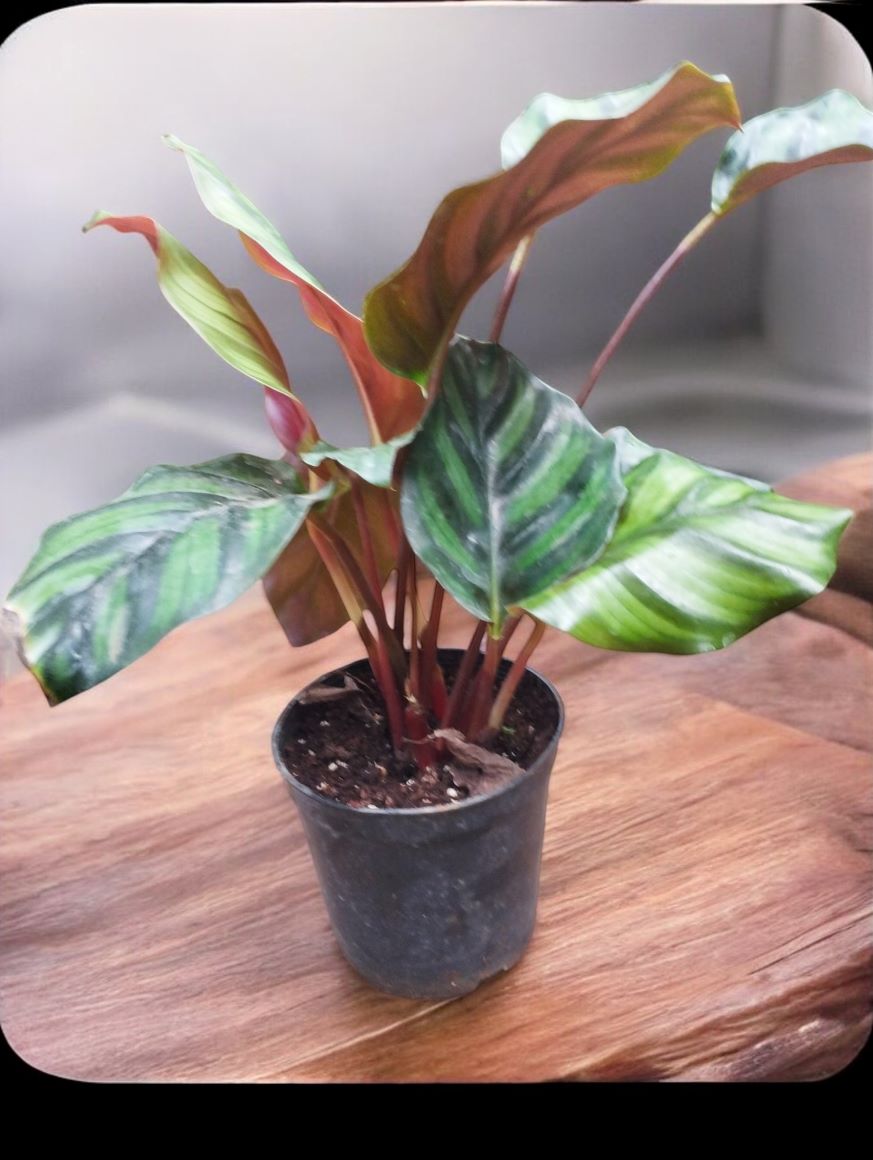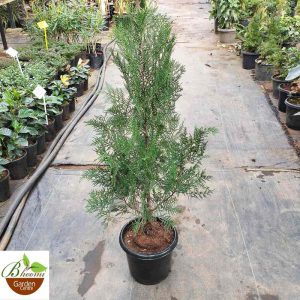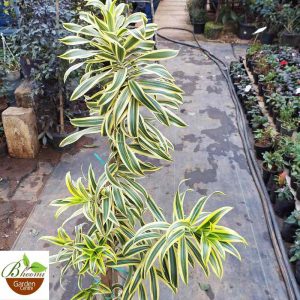Calathea Rose Apple
This product is available for shipping only in Bangalore
Calathea Sanderiana or Calathea Ornata Pink, Calathea ornata ‘Pinstripe’ has dark green leaves with thin, pink stripes, making a beautiful plant with a striking contrast. A beautiful tropical houseplant, calathea thrives in spots with high humidity.
Plant Height: approx 12 inches including the pot
Pot size : 4 inches nursery pot
- Estimated Delivery : Up to 3 business days
- Free Shipping & Returns : On all orders over ₹550 in Bangalore
Calathea Roseopicta, commonly known as Calathea Rose Apple, is a beautiful tropical plant known for its distinctive, colorful foliage. It is part of the Marantaceae family, native to the rainforests of South America. The plant’s vibrant leaves are characterized by a deep green base with striking, rosy pink markings and a soft, velvety texture. Here’s a comprehensive guide to caring for Calathea Roseopicta:
1. Light Requirements
- Bright, Indirect Light: Calathea Roseopicta thrives in bright, indirect light. Place it near a window with filtered sunlight or in a well-lit room. Avoid direct sunlight, which can scorch the leaves and cause fading.
- Low Light Tolerance: It can tolerate lower light conditions, but the vibrant colors and patterns might be less pronounced in such environments. Insufficient light can also slow growth and lead to leggy stems.
2. Watering
- Consistent Moisture: Keep the soil consistently moist but not soggy. Water the plant when the top inch of soil feels dry to the touch. Use lukewarm, distilled, or filtered water to avoid chemicals and salts that can harm the plant.
- Humidity: High humidity is crucial for Calathea Roseopicta. Aim for humidity levels between 60-80%. Mist the leaves regularly, use a humidity tray, or employ a humidifier to maintain adequate moisture in the air, especially during winter or in dry climates.
3. Soil
- Well-Draining, Peat-Based Soil: Use a well-draining potting mix that retains moisture but allows excess water to drain away. A mix of peat moss, perlite, and regular potting soil is ideal. Peat helps retain moisture, while perlite improves drainage and aeration.
- Slightly Acidic to Neutral pH: Calathea Roseopicta prefers a soil pH range of 6.0 to 6.5.
4. Temperature and Humidity
- Warm Temperatures: This plant prefers temperatures between 65-80°F (18-27°C). It should be protected from cold drafts, air conditioning vents, and temperatures below 60°F (15°C).
- High Humidity: High humidity is essential to prevent the edges of the leaves from browning or curling. Maintain humidity levels through misting, humidity trays, or humidifiers.
5. Fertilizing
- Regular Feeding: Feed the plant every 4-6 weeks during the growing season (spring and summer) with a balanced, water-soluble fertilizer diluted to half strength. This promotes healthy growth and vibrant leaf coloration.
- Reduce Feeding in Winter: Fertilizing is not necessary in winter when the plant’s growth slows down.
6. Pruning and Maintenance
- Remove Yellow or Damaged Leaves: Regularly trim off any yellowing, browning, or damaged leaves to maintain the plant’s appearance and encourage new growth. Use clean, sharp scissors or pruning shears.
- Cleaning Leaves: Wipe the leaves with a damp cloth to remove dust and keep them looking vibrant. This also helps the plant absorb more light.
7. Propagation
- Division: The most common method of propagating Calathea Roseopicta is by division. During repotting, carefully separate the plant into smaller sections, ensuring each section has roots and healthy leaves. Plant the divisions in separate pots with fresh potting mix.
- Stem Cuttings: Propagation from stem cuttings is not typically recommended for Calathea Roseopicta, as it does not root well from cuttings.
8. Pests and Diseases
- Common Pests: Watch out for pests such as spider mites, mealybugs, and aphids. Regularly inspect the plant and treat infestations with insecticidal soap, neem oil, or a mixture of water and mild dish soap.
- Fungal Issues: Overwatering can lead to root rot and other fungal problems. Ensure good air circulation around the plant and avoid waterlogging the soil.
9. Indoor Growing
- Great for Low Light Areas: Calathea Roseopicta is suitable for indoor environments due to its low light tolerance and low maintenance needs. It is a good choice for offices, living rooms, and bedrooms.
- Air-Purifying Qualities: Like other Calathea varieties, it helps purify the air by removing toxins such as formaldehyde and benzene.
10. Toxicity
- Non-Toxic: Calathea Roseopicta is non-toxic to pets and humans, making it a safe choice for households with cats, dogs, or children.
11. Container Growing
- Pot Requirements: Choose a pot with drainage holes to prevent waterlogging. Use a high-quality, well-draining potting mix and repot every 1-2 years or when the plant becomes root-bound.
- Decorative Containers: Calathea Roseopicta looks stunning in decorative containers that complement its beautiful foliage. Ensure the container size accommodates the plant’s growth.
12. Overwintering
- Indoor Protection: If grown outdoors in summer, bring the plant indoors before the first frost. Place it in a bright location with indirect light and maintain humidity levels to keep the plant healthy during winter.
By following these care tips, your Calathea Roseopicta will thrive, showcasing its beautiful, colorful foliage and adding a touch of elegance to your indoor space. Its sensitivity to environmental changes makes it a rewarding choice for plant enthusiasts who enjoy providing the specific care required to keep it healthy and vibrant.
** Plants photos are for representation purpose only. We will make best efforts to send the plants as in photos itself. There may be small white dots on the plant, as these plants cared in nursery using the hard water and pesticide spray. However these will eventually disappear as you take care and clean the leaves. Trust us, we want to give you the best















Reviews
There are no reviews yet.